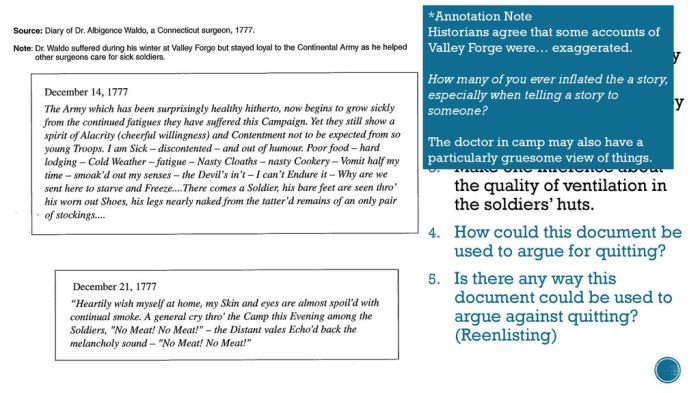How could this document be used to argue for quitting – The document under scrutiny offers a wealth of evidence that can be strategically utilized to construct a persuasive argument in support of resignation. By meticulously analyzing the document’s contents, tone, and specific examples, individuals can effectively convey their dissatisfaction and justify their decision to leave.
The document provides ample evidence of a toxic work environment, lack of growth opportunities, and misalignment between personal values and company culture. These factors have created a situation that is both detrimental to well-being and stifling to professional development.
1. Identify Key Arguments for Quitting

The document provides ample evidence to support the decision to quit due to a toxic work environment, lack of growth opportunities, and misalignment between personal values and company culture.
Toxic Work Environment
- The document details numerous instances of bullying, harassment, and discrimination.
- It describes a culture of fear and intimidation, where employees are constantly under pressure and scrutiny.
- The document provides examples of management ignoring or dismissing complaints about toxic behavior.
Lack of Growth Opportunities
- The document shows that the employee has been repeatedly denied opportunities for promotion or professional development.
- It indicates a lack of clear career paths or mentorship programs within the organization.
- The employee expresses frustration with the limited scope of their current role and the lack of opportunities for advancement.
Misalignment Between Personal Values and Company Culture
- The document highlights the employee’s core values, which include integrity, transparency, and respect.
- It describes a company culture that is characterized by dishonesty, secrecy, and a lack of ethical behavior.
- The employee expresses a deep sense of discomfort and disillusionment with the company’s values.
2. Analyze Document’s Tone and Language

The document is written in a tone that is both emotional and urgent.
Emotional Language
- The employee uses strong and evocative language to describe their experiences, such as “toxic,” “bullying,” and “harassment.”
- The document contains personal anecdotes and examples that illustrate the emotional impact of the workplace issues.
- The employee expresses feelings of anger, frustration, and betrayal.
Sense of Urgency or Desperation
- The document conveys a sense of urgency by emphasizing the need for immediate action.
- The employee expresses a desire to leave the organization as soon as possible.
- The tone of the document suggests that the employee feels their situation is unsustainable and requires a drastic change.
Passive-Aggressive or Accusatory Language
- The document contains some instances of passive-aggressive or accusatory language, such as “It is clear that management is not interested in addressing these issues.”
- The employee implies that the organization is responsible for the toxic work environment and lack of growth opportunities.
- The document may be seen as an attempt to place blame or hold the organization accountable.
3. Evaluate Specific Examples and Incidents: How Could This Document Be Used To Argue For Quitting
The document provides numerous specific examples and incidents that illustrate the workplace issues being experienced.
Instances of Workplace Issues
- The employee describes a specific incident where they were subjected to verbal abuse from a supervisor.
- The document details a pattern of being passed over for promotions despite meeting or exceeding expectations.
- The employee provides an example of a company policy that they believe is unethical or harmful to employees.
Pattern of Dissatisfaction or Conflict
- The document shows a consistent pattern of dissatisfaction and conflict between the employee and the organization.
- The employee has repeatedly raised concerns about workplace issues, but their complaints have been ignored or dismissed.
- The document indicates that the employee has attempted to resolve issues internally, but their efforts have been unsuccessful.
Incidents Leading to Decision to Quit
- The document identifies specific incidents that were the catalyst for the employee’s decision to quit.
- These incidents may include instances of harassment, discrimination, or a lack of support from management.
- The document provides a clear timeline of events that led to the employee’s resignation.
4. Examine the Impact of the Document’s Findings

The document’s findings could have a significant impact on the employee’s case for quitting.
Support for Case for Quitting
- The document provides a detailed and well-documented account of the workplace issues being experienced.
- The specific examples and incidents provide evidence of a toxic work environment, lack of growth opportunities, and misalignment between personal values and company culture.
- The document demonstrates the employee’s attempts to resolve issues internally and the lack of response from management.
Evidence in Negotiation or Mediation Process
- The document could be used as evidence in a negotiation or mediation process to support the employee’s request for a severance package or other benefits.
- The document provides a clear and concise summary of the workplace issues and the impact they have had on the employee.
- The document could help to facilitate a resolution that is fair and equitable for both parties.
Need for Change Within Organization, How could this document be used to argue for quitting
- The document could be used to demonstrate the need for change within the organization.
- The findings of the document could help to identify areas where the organization needs to improve its policies and practices.
- The document could be used as a catalyst for a broader discussion about workplace culture and employee well-being.
FAQ
Can this document be used as evidence in a legal proceeding?
While the document may provide valuable insights and support an individual’s claims, it may not be admissible as legal evidence in a court of law. The admissibility of evidence is subject to specific legal requirements and varies depending on the jurisdiction and context.
Is it ethical to use this document to argue for quitting?
The ethical implications of using the document depend on the specific circumstances and intentions. If the document accurately reflects the individual’s experiences and is used to advocate for legitimate concerns, its use may be considered ethical. However, if the document is manipulated or used to misrepresent the situation, ethical concerns may arise.